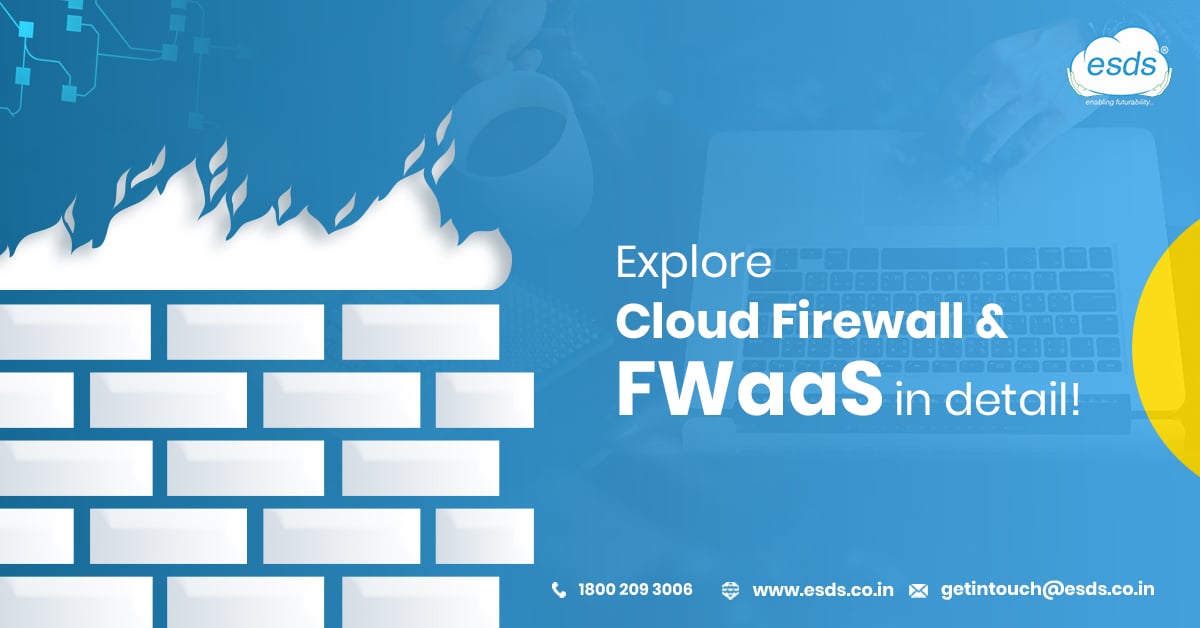Explore Cloud Firewall and FWaaS in detail!
A cloud firewall shields cloud infrastructure despite the lack of a distinctly specified network edge.
Let’s explore, what is a cloud firewall?
Here we will begin with simple examples like, Banks have a lot of physical security in place. Most brick-and-mortar banks will incorporate security traits like security cameras (CCTVs) and bulletproof glasses. Security guards including bank employees also help to stop possible thieves, and all the cash is deposited in extremely secure vaults.

Although just imagine if, rather than being kept in one place, each bank branch’s cash was deposited in separate vaults all over the country that was served by a company specializing in secure maintenance. How could the bank be convinced that its capital was protected without deploying extra security support throughout its scattered vaults? And.., This is what cloud firewalls do.
Yes! The cloud is similar to a bank with scattered devices, yet instead of money, the cloud stores data and computational power. Authorized users can join and access the cloud anytime from anywhere and on nearly any network. Applications that operate in the cloud can be working anywhere, that also connect to cloud platforms and infrastructure.
Cloud firewalls prevent cyber-attacks aimed at these cloud assets. As the name signifies, a cloud firewall is a firewall that is hosted in the cloud. Cloud-based firewalls block a virtual boundary around cloud platforms, infrastructure, and also applications, simply as standard firewalls build a boundary around an organization’s private network. Deploying a cloud firewall is the same as replacing a bank’s local security cameras/CCTVs including a physical security guard with a global 24/7 security station that has a centralized team and security camera supports from all the places where a bank’s assets are stored.
Now explore what is a firewall?
A firewall is nothing but a strong security product that filters out malicious traffic. Traditionally, firewalls have to run within a trusted private network and an untrusted network – e.g., within a private network and the Internet. Early firewalls were dynamic devices that connected to an organization’s on-premises infrastructure. Firewalls block and enable network traffic according to an internal set of commands. Some firewalls enable administrators to customize these commands.
Nevertheless, with the increasing demand for cloud computing, the line within a trusted network and the wider Internet is gone; therefore, the necessity for cloud firewalls that form a virtual boundary in between the trusted cloud assets and the untrusted Internet traffic.
Now the question is, what does Firewall-as-a-Service (FWaaS) mean?
FWaaS, i.e., Firewall-as-a-Service, is another term used for cloud firewalls. Similar to other “as-a-Service” classes, such as Software-as-a-Service or Platform-as-a-Service, an FWaaS operates in the cloud and is accessed over the Internet, and third-party vendors extend them as a service that they renew and maintain.
Till now, you must have understood what a cloud firewall is? Now let us learn more about cloud firewalls and NGFW.
Differentiation between a cloud firewall and an NGFW- next-generation firewall:
An NGFW stands for a next-generation firewall. It is a firewall that includes innovative technologies that weren’t available in earlier firewall products, like:
- IPS- (Intrusion prevention system): An intrusion prevention system identifies and prevents cyber-attacks.
- DPI- (Deep packet inspection): NGFWs investigate data packet headers and payload, alternatively of the headers. This helps in identifying malware and different sets of malicious/harmful data.
- Application control: NGFWs can control what specific applications can access, or prevent applications collectively.
NGFWs may hold additional superior skills as well.
“NGFWs- Next-generation firewall” is a widely implemented term, although it doesn’t significantly operate in the cloud. A cloud-based firewall may have NGFW skills, simply an on-premises firewall could also mean an NGFW.
Network perimeters and How does cloud computing affect the network perimeter?
The network perimeter is the partition between the inside network an organization operates, and the network access implemented by an outside vendor, regularly an ISP (Internet service provider). Firewalls were originally invented to manage and control such type of network perimeter and not allow anything malicious through.
In cloud computing, the network perimeter typically disappears. Users enter services over the uncontrolled Internet. A user’s real location, and sometimes the device which they are using, no longer concerns. It’s challenging to install a layer of security around corporate resources because it’s essentially difficult to conclude where the security layer must run. Some organizations resort to uniting various security products, including regular firewalls, VPNs, access control, and IPS products, although this adds plenty of complexity to IT which is complex to handle.
To Conclude
ESDS WAF (Web Application Firewall) protects cloud characteristics from vulnerability exploits, supports stop DDoS attacks, and empowers IT admins to compose their custom firewall commands. Enterprise can deploy the WAF in front of any kind of cloud deployment – public cloud, multi-cloud, hybrid cloud, etc.
